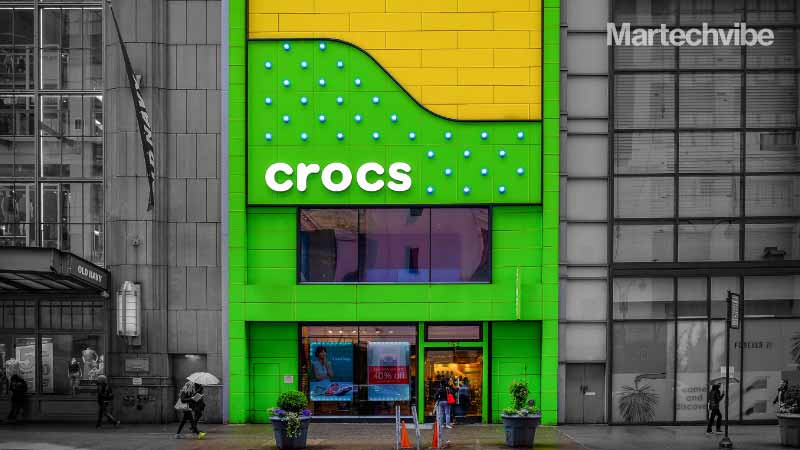Crocs is Thinking Outside The Shoebox
Over the last year, Crocs has returned a whopping 200 per cent to investors and is rapidly closing in on a 2,000 per cent return over the last five years. Here’s a look at what they are doing right. In March 2020, Crocs launched a digital tool to customise shoes with Jibbitz charms. The Crocs […]
Topics

Over the last year, Crocs has returned a whopping 200 per cent to investors and is rapidly closing in on a 2,000 per cent return over the last five years. Here’s a look at what they are doing right.
In March 2020, Crocs launched a digital tool to customise shoes with Jibbitz charms. The Crocs Jibbitz Personaliser, created in partnership with LiveArea, a global customer experience and commerce agency, lets customers virtually customise a pair of Crocs with Jibbitz shoe charms. The tool, which was built using Salesforce Commerce Cloud, triggered an 18 per cent increase in average order value, and a double-digit increase in Jibbitz sales.
It’s also been a year of strategic collaborations. In 2020, and then again in 2021 thanks to its success, Crocs released a limited edition range in collaboration with rapper Post Malone, luxury brand Balenciaga, Justin Bieber and his own fashion label Drew House. Alongside inclusivity and purpose-driven marketing, this has helped further the brand’s success. Now, Crocs has teamed up with skateboarding brand Palace once again for the second drop of their coveted camo-printed clogs — just in time for the new year.
The big news this week is that Crocs acquired the shoe company, Hey Dude, for $2.5 billion.
The move lets the 20-year-old Colorado-based brand close in on rivals such as Skechers and Deckers, the parent of UGG. The deal also adds distance between Crocs and newly listed upstarts such as Allbirds.
Croc aims to grow the Hey Dude brand and leverage its D2C expertise and double it into a $1 billion plus brand by 2024. The company said the Crocs-Hey Dude combo gives it a quadrupled total addressable market of over $160 billion, which it aims to penetrate through a mix of scale, product innovation, existing wholesale relationships and expansion in Asia and EMEA countries.
If you liked reading this, you might like our other stories
The Rise of Creative Entrepreneurs
VMF — Three Years and Growing






